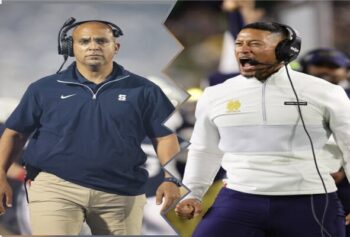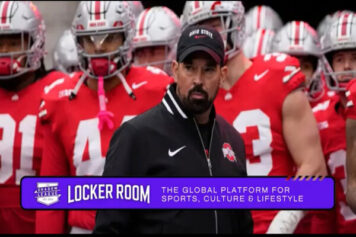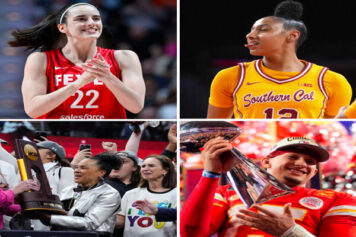Racial issues tend to get analyzed through a singular lens. Generally, tensions arise and are analyzed when people of color–all colors–mix with white culture.
Friend of TSL Justice B. Hill took a look at it through another lens in his latest SBNation.com story on coach James Reed, once a shooter from Indiana who played for coach Butch Beard at Morgan State. The story goes through Reed's high school playing days, the environment he grew up in and the culture shock he experienced in Baltimore.
"That's when it all started," he said. "Everyone wanted to know why I was here. Why was I at a black college? The questions were the same, and so was my answer: I'm here to play basketball."
The questions didn't stop outside the dining hall's doors. Three days later, Reed experienced an ordinary moment that, in retrospect, reflected the sweep of cultural adaptions he encountered at Morgan State as the solitary white boy. As he dressed in dorm room 208-C of Rawlings Hall for his first Friday night out, Reed felt his heart pounding out of his chest. Uneasy about wearing his own clothes, he fidgeted with the white-and-gray, 3XL Rocawear button-up shirt and the three-sizes-too-big jeans he borrowed from a roommate. With two quick tugs, a teammate pulled the jeans downward, ensuring they sagged off Reed's ass. Someone yelled from the corridor to remind Reed not to tuck in his shirt. Inspecting his look, Reed first shook his head and moaned: Oh, nnnoooooo, this won't do.
Nevertheless, an hour later, jeans sagging, Reed and his dorm mates piled into his shiny red, 2001 Monte Carlo with Indiana plates and drove to Hammerjacks, a popular dance club near Baltimore's Inner Harbor that catered to a black clientele. Outside, the line ran 100 deep on a humid, late-summer night as Reed and his friends took spots at the rear. As the line inched toward the club's entrance, he caught people staring: Whatcha doin' here, white boy?
The article goes on to describe his experience, lost on far too many people, and how it changed Reed's perspective. He gets offended when his white students discuss black culture with ignorant, sweeping sentiments. He probably cringed when he read his mother dropping a Jackie Robinson reference in the story.
But Reed had a similar affect on the black community at Morgan, as well. Hill brings up Marcus Jacoby, a white quarterback who was cast out as a pariah at Southern University before transferring to LSU. Reed didn't get that vibe from his school, embracing a color blindness that allowed him to be him despite the foreign culture.
Of course, that didn't stop fans from other teams from giving Reed the business–one set of fans let him have a "Let's Go White Boy" for an entire game–especially after getting dunked on at Howard. He might have had the reddest face in Memorial Gym history.
The lesson, however, was not lost: When you're comfortable in your own skin, your skin color doesn't matter. The problem isn't either: It's impossible to be comfortable in your own skin if you don't ever leave your comfort zone, which doesn't happen culturally for many Americans. "We're all just people," Reed summarizes.
Check the full story. Props to Justice for the work, and props to Reed for making it happen.



